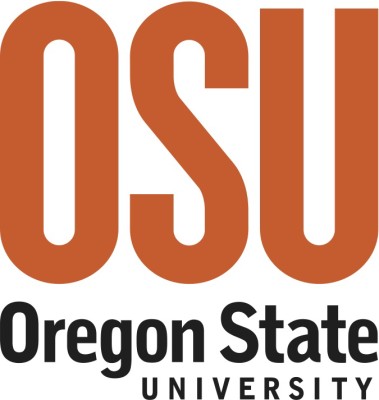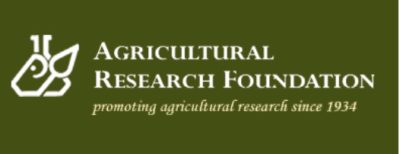Phytoplankton physiology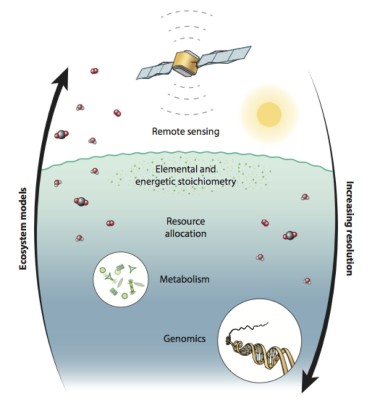
In aquatic systems, phytoplankton acclimate to dynamic ranges of external resource concentrations that influence rates of primary productivity. Underlying environmental acclimation are metabolic shifts that reallocate carbon and energetic currencies through a variety of pathways to balance resource availability and growth. We track the distribution of carbon and energy through the primary metabolic pathways leading to net carbon accumulation (net growth). This approach provides a complete accounting of photosynthetic electron flow and reveals growth rate-dependent shifts in photosynthetic product allocation. We recently showed that the basis for these cell behaviors is linked to photosynthetic properties of specific phases of the cell cycle. These behaviors were captured in a mathematical model describing carbon utilization and suggest the intriguing possibility that a single model framework may be used to broadly characterize steady-state phototrophic metabolism.
Recent publications on this topic:
Fox, J., M.J. Behrenfeld, N. Haentjens, A. Chase, S.J. Kramer, E. Boss, L. Karp-Boss, N.L. Fisher, W.B. Penta, T.K. Westberry, and K.H. Halsey. 2020. Phytoplankton growth and productivity in the western North Atlantic: Observations of regional variability from the NAAMES field campaigns. Frontiers in Marine Science. doi: 10.3389/fmars.2020.00024
McBeain, K.A. and K.H. Halsey. 2018. Altering phytoplankton growth rates changes their value as food for microzooplankton grazers. Aquatic Microbial Ecology. 82:19-29. doi.org/10.3354/ame1880
Jones, B.M., Halsey, K.H., and M.J. Behrenfeld. 2017. Novel incubation-free approaches to determine phytoplankton net primary productivity, growth, and biomass based on flow cytometry and quantification of ATP and NAD(H). Limnology and Oceanography: Methods. doi: 10.1002/lom3.10213
Felcmanova, K., Lukes, M., Kotabova, E. Lawrenz, E., Halsey, K.H., and Prasil, O. 2017. Carbon use efficiencies and allocation strategies in Prochlorococcus marinus strain PCC9511 during nitrogen-limited growth. Photosynthesis Research.
Moore, E.R., Bullington, B.S., Weisberg, A.J., Jiang, Y., Chang, J., and K.H. Halsey. 2017. Morphological and transcriptomic evidence of sexual reproduction in Thalassiosira pseudonana and other centric diatoms. PLoS ONE 12(7): e0181098. https://doi.org/10.1371/journal.pone.0181098
Silsbe, G.M., Behrenfeld, M.J., Halsey, K.H., Milligan, A.J., and T.K. Westberry. 2016. The CAFÉ model: An accurate net production model for global ocean phytoplankton. Global Biogeochemical Cycles 30(12):1756-1777
Fisher, N.L. and Halsey, K.H. 2016. Mechanisms that increase the growth efficiency of diatoms in low light. Photosynthesis Research 129:183-197 DOI 10.1007/s11120-016-0282-6
Halsey, K.H. and Jones, B.M. 2015. Phytoplankton Strategies for Photosynthetic Energy Allocation Ann. Rev. of Mar. Sci. 7:265-297.
Halsey, KH, Milligan, AJ, Behrenfeld, MJ. 2014. Contrasting strategies of photosynthetic energy utilization drive lifestyle strategies in ecologically important Picoeukaryotes. Metabolites 4(2): 260-280.
Volatile Organic Carbon cycling by plankton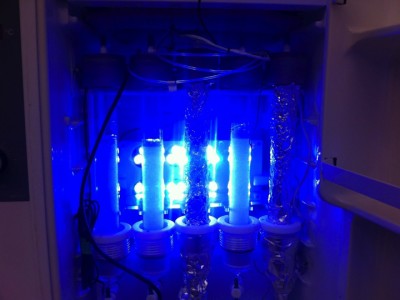
Some very abundant marine bacterioplankton oxidize low molecular weight volatile organic compounds (VOCs). This discovery led me to ask the question, “are phytoplankton a source of these important compounds?” We recently discovered that phytoplankton produce VOCs that can escape to the atmosphere, where they have significant influences on Earth’s radiative budget and climate. The magnitude of VOC cycling in the oceans could rival that in the atmosphere. This research is now part of a large interdisciplinary project to resolve the biological and environmental factors that drive large annual phytoplankton bloom events and to understand the influence of these bloom events on aerosol formation and climate. My role as Co-PI on this project is to quantify the magnitude of VOC cycling in the marine ecosystem during different phases of the North Atlantic bloom.
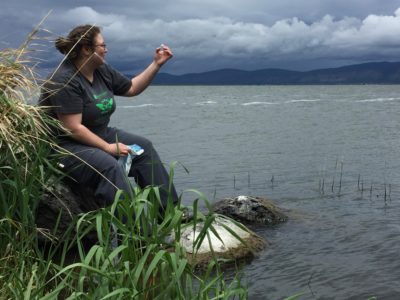 We are now expanding this work to study VOCs in fresh water systems where eutrophication can cause large algal blooms, including some that are toxic. We are investigating the interactions between environmental variables, community composition, and potential impacts on air quality and agricultural feedbacks.
We are now expanding this work to study VOCs in fresh water systems where eutrophication can cause large algal blooms, including some that are toxic. We are investigating the interactions between environmental variables, community composition, and potential impacts on air quality and agricultural feedbacks.
Pictured is graduate student, Lindsay Collart sampling at Upper Klamath Lake, OR.
Recent publication on this topic:
Moore, E.R., C.L. Davie-Martin, S.J. Giovannoni, and K.H. Halsey. 2019 Pelagibacter metabolism of diatom-derived volatile organic compounds imposes and energetic tax on photosynthetic carbon fixation. Environmental Microbiology. doi: 10.1111/1462-2920.14861
Giovannoni, S.J., K.H. Halsey, J. Saw, O. Muslin, C.P. Suffridge, J. Sun, C.P. Lee, E.R. Moore, B. Temperton, S.E. Noell. 2019. A parasitic arsenic cycle that shuttles energy from phytoplankton to heterotrophic bacterioplankton. mBio. doi.org/10.1128/mBio.00246-19
Halsey, K.H, S.J. Giovannoni, M. Graus, Y. Zhao, Z. Landry, J.C. Thrash, and J. de Gouw. 2017. Biological cycling of volatile organic carbon by phytoplankton and bacterioplankton. Limnology and Oceanography. doi: 10.1002/lno.10596
Sun, J., J.D. Todd, J.C. Thrash, M. Qian, Y. Qian, B. Temperton, J. Guo, E.K. Fowler, J. Aldrich, P. De Leenheer, S.H. Payne, A.W.B. Johnston, C. L. Davie-Martin, K.H. Halsey and S.J. Giovannoni. 2016. The abundant marine bacterium Pelagibacter simultaneously catabolizes dimethylsulfoniopropionate to the gases dimethyl sulfide and methanethiol. Nature Microbiology. doi:10.1038/nmicrobiol.2016.65
For more information about the North Atlantic Aerosols and Marine Ecosystems (NAAMES) project go to: http://naames.larc.nasa.gov/
A fun and informative blog from the first NAAMES cruise:
http://www.journalistatsea.com/
Additional photos from the first NAAMES cruise are in the “Kudos” page.
Funding:
The Halsey Lab has been fortunate to receive funding for these research projects from:


